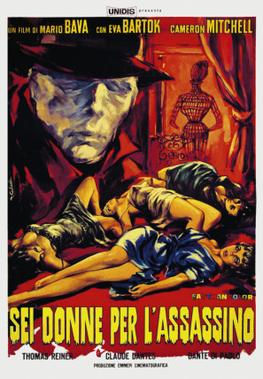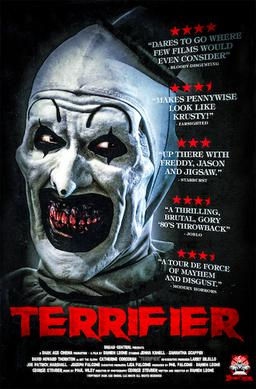Blood and Black Lace (1964) review
- Jeremy Kelly
- Oct 11, 2021
- 4 min read
11. Blood and Black Lace (1964)
Directed by: Mario Bava
Produced by: Massimo Patrizi, Alfredo Mirabile
Screenplay by: Marcello Fondato, Giuseppe Barillà
Starring: Eva Bartok, Cameron Mitchell, Thomas Reiner, Claude Dantes, Dante Di Paolo

Fair warning; we’ve got four Italian movies to review this month. Festeggiate, amici miei! That means, “Celebrate, my friends!”...Hey, I might have an Irish name, but there’s at least some Italian blood in me, leave me alone. The first one we’re looking at is “Blood and Black Lace,” directed by Mario Bava; by this time, he was already making a name for himself with his early giallo efforts in “Black Sunday,” “The Girl Who Knew Too Much” and “Black Sabbath.” So this isn’t typically recognized as the first true giallo film, but it seems to be one of the first examples in which he really perfected the style; we had “The Telephone” story in “Black Sabbath,” but now it’s stretched over a feature length. The plot is about a masked killer going around murdering fashion models, while the local police inspector investigates for possible suspects. It’s weak on narrative and character development, but the visuals and charmingly cynical dialogue make it a worthy entry in Italy’s horror portfolio.
The movie begins with the murder of model Isabella (Francesca Ungaro) by a figure wearing a white mask, a black fedora and a trenchcoat near the Roman fashion house where she works. Inspector Silvestri (Thomas Reiner) arrives on the scene and interviews the house’s managers Massimo Morlacchi (Cameron Mitchell) and recently widowed Countess Cristiana Cuomo (Eva Bartok), as well as Isabella’s ex-boyfriend, antique dealer and cocaine user Franco (Dante Di Paolo). Sometime later, the staff uncover a secret diary Isabella kept at the salon which details various secrets about them. This information is evidentally very important, as the characters go to extreme efforts to hide their indiscretions, and the killer starts hunting down whoever has the diary. Who’s doing this, and for what reason?

There are numerous aspects of this movie that typically don’t work; the characters serve little purpose other than adding up the body count, there’s little to no nuance, and the mystery is practically non-existant. But that’s not what it’s about; Bava’s films—at least from what I’ve seen—were more centered on the extent of mankind’s selfishness and hubris, told more through visual storytelling than focusing on grounded reality. That’s why there’s such an almost comical lack of sympathy towards the characters’ fates; I think only Isabella’s friend Peggy (Mary Arden) genuinely mourns her death, while nearly everyone else seems to regard it as just another day. “Don’t cry,” Cristiana chides Peggy while trying to get her to model a dress intended for Isabella, “Or you’ll ruin your makeup.” Hell, the moment the diary is discovered, they’re practically chomping at the bit to take a peak, bedside manor be damned. Anyway, the point I’m trying to make is that it’s more about the characters’ psychology around justifying their own means through body language, and the performances have enough conviction to complement it, while the kills are memorably suspensful and brutal.
The aesthetics serve as the proper backdrop to the story, thanks to the intimate cinematography—which has some zoom-ins that are admittedly hokey—and rich color palate, which just looks gorgeous in many of the exterior nighttime shots; it’s like we’re watching a comic book. The musical score by Carlo Rustichelli has this quintessential 1960s vibe that you’ll probably either love or hate; personally, I think it works well enough. Apparently, the budget for the film was so low, Bava would mount the camera on a child’s wagon and use it for tracking shots. Fortunately, there’s no shortage of frightening set pieces; the one that sticks with me is when the killer presses Peggy’s hand and then face against a furnace. I really like the use of shadows and scenery, even if the mise-en- scène looks a little too cluttered at times; however, the mannequins are a nice touch. And while I say the characters being secondary isn’t much of a fault, it can be a slog sitting through their bullshit; the movie’s not very long, yet I feel it could have been cut down a little more, or at least give us one or two characters that we can latch onto more emotionally that survive longer, especially Silvestri, who barely does anything constructive.

At its bare bones, “Blood and Black Lace” could be construed as just a movie about beautiful, scantily clad women getting killed, and little more than that. But it has this sexy, cutthroat edge to it, even down to the opening credits. It seems weird on first glance, just showing the cast posed around the salon like they’re literally at a fashion photo shoot; but it feels somehow appropriate, like the characters are all silently indicating, “Yeah, we’re bad; just enjoy the ride.” The movie can feel too melodramatic, but if you just go in accepting the reality that everyone is either a scoundrel or clueless, you’ll find something potentially harrowing and unique, as well as influential for several future classics. Dario Argento, John Carpenter, David Lynch, Guillermo del Toro, Quentin Tarantino and many others all owe something to this overlooked macabre gem, which has its flaws but is nevertheless well-crafted and stylish.
My rating: 8/10





Comments